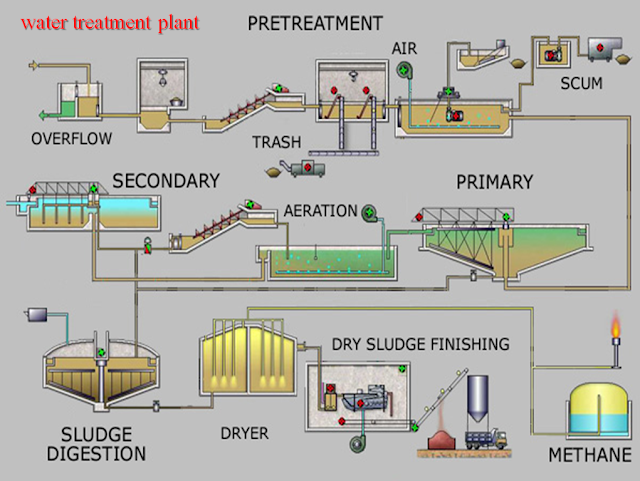Water treatment plants play a crucial role in ensuring the availability of clean and safe drinking water to communities. The design of these plants is a critical aspect that influences their efficiency, effectiveness, and environmental impact.
In this article, we’ll delve into the various components and considerations involved in water treatment plant design, highlighting key points for creating a comprehensive Water Treatment Plant Design PowerPoint presentation.
Table of Contents
WATER TREATMENT PLANT DESIGN PPT
Water treatment Plant PPT download link is given as below.
Introduction to Water Treatment Plant Design
Water treatment plant design involves the integration of various processes to ensure that raw water from natural sources is transformed into potable water that meets stringent quality standards. This process not only involves the removal of contaminants but also the preservation of essential minerals and nutrients.
Importance of Proper Plant Design
The significance of a well-designed water treatment plant cannot be overstated. A proper design ensures that the treatment processes are optimized, leading to efficient resource utilization and minimized waste generation. Moreover, a sound design guarantees the safety of plant operators and the communities they serve.
Also Read: Different Types of Water Demand
Understanding Water Sources
Before designing a treatment plant, a thorough understanding of the source water is essential. Whether it’s surface water from rivers or lakes or groundwater from wells, the quality and characteristics of the source water dictate the treatment processes required.
Preliminary Treatment Processes
Preliminary treatment involves the initial steps of screening to remove large debris and grit removal to prevent damage to downstream equipment. Pre-settling and flow equalization help in stabilizing the flow and reducing variations in influent quality.
Coagulation and Flocculation
Coagulation involves the addition of chemicals that neutralize charges on particles, allowing them to clump together. Flocculation then brings these particles together into larger flocs that are easier to separate.
Also Read: Factors affecting Water Demand
Sedimentation and Clarification
During sedimentation, the flocs settle out under gravity, resulting in the separation of suspended solids from the water. Clarifiers facilitate this process and improve the efficiency of solid removal.
Filtration Systems
Filtration is a key step in water treatment. Rapid sand filtration and slow sand filtration are commonly used methods that further remove suspended particles and microorganisms.
Disinfection Techniques
Disinfection is crucial to eliminate pathogens that can cause waterborne diseases. Chlorination and UV disinfection are common methods employed for this purpose.
Advanced Treatment Technologies
In cases where additional purification is required, technologies like reverse osmosis and activated carbon adsorption can be incorporated to address specific contaminants.
Plant Layout and Infrastructure
The layout of a water treatment plant should be well-designed to ensure smooth workflow and efficient operation. Proper placement of equipment, clear flow diagrams, and safety measures are vital aspects.
Also Read: Disinfection Process of Water Treatment Plant
Energy Efficiency and Sustainability
Water treatment plants can be designed with sustainability in mind by integrating renewable energy sources and implementing strategies to minimize energy consumption and waste generation.
Operational and Maintenance Considerations
Monitoring and control systems are integral to track plant performance and make real-time adjustments. Regular maintenance protocols ensure the longevity and effectiveness of the plant.
Regulatory Compliance and Permitting
Designing a plant that adheres to local and national regulations is essential. Obtaining the necessary permits ensures that the plant operates legally and safely.
Also Read: Different Types of Plumbing Tools and Their Uses
Case Studies of Successful Designs
Examining real-world examples of well-designed water treatment plants provides insights into the practical application of design principles in diverse settings.
Future Trends in Water Treatment Plant Design
Advancements in technology, increasing water scarcity, and growing environmental concerns are driving innovation in water treatment plant design. Future designs will likely emphasize resource efficiency, resilience, and adaptability.
FAQs (Frequently Asked Questions)
What is the main goal of water treatment plant design?
The main goal is to transform raw water into clean, safe, and potable water through various treatment processes.
How do plant designers ensure regulatory compliance?
Plant designers must stay updated with local and national regulations and incorporate them into the design to ensure compliance.
What role does advanced technology play in plant design?
Advanced technologies like reverse osmosis and UV disinfection enhance the plant’s ability to remove specific contaminants effectively.
What are some future trends in water treatment plant design?
Future designs will likely focus on resource efficiency, advanced automation, and addressing emerging contaminants.

I am a Professional Civil & Structural Engineer having more than 4 years of experience in Engineering, Procurement and Construction industry. Here i sharing the latest updates of EPC Projects and Construction News.



